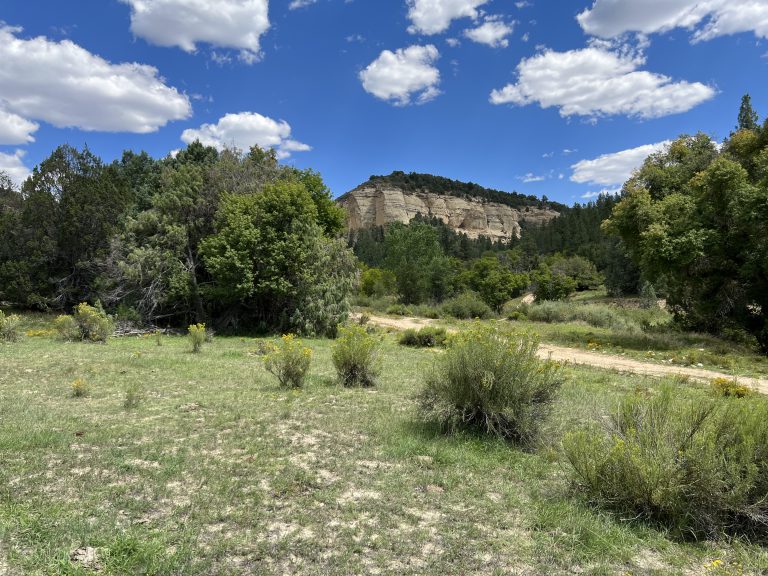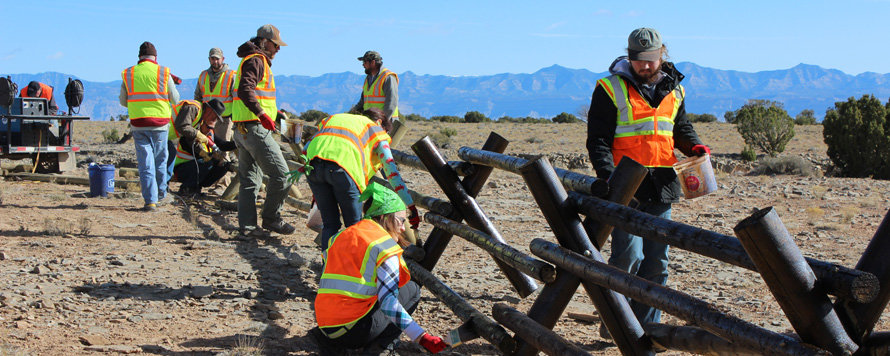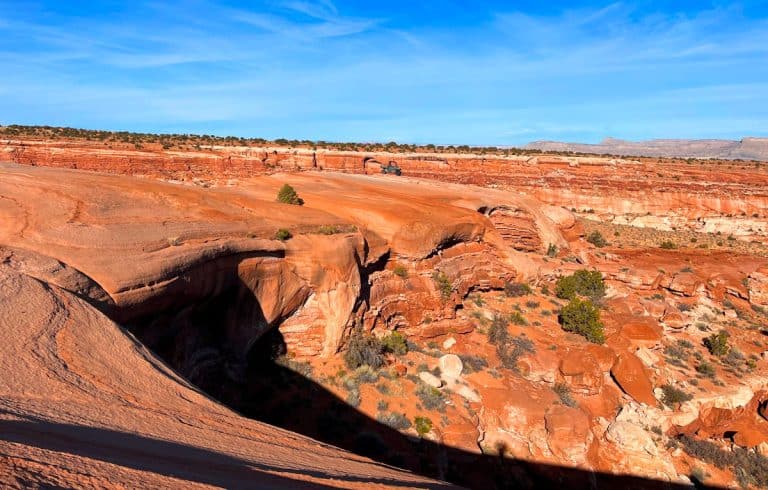SITLA held two separate stewardship projects this past month, helping to protect the Spirit Railroad and Temple Mountain pictograph panel on school trust lands in Emery County.
“Castle Country contains many spectacular historic and archaeological sites,” said SITLA Staff Archaeologist Joel Boomgarden. “We appreciate the opportunity to partner with Emery County and the public to educate visitors about and protect these culturally significant sites on Utah trust lands.”
The first site, the Spirit Railroad grade, is located approximately 35 miles east of Castle Dale on the SITLA’s 31,000-acre Cedar Mountain Block, which is managed by the agency on behalf of Utah’s public school system.
As its name implies, Spirit Railroad refers to a railroad line that was never completed. In 1880, the Denver and Rio Grande Railway began building a narrow-gauge rail line through the Rocky Mountains from Colorado to Utah. From Green River, the railroad would travel through Cottonwood Wash and Buckhorn Flat to the Castle Valley Junction, located east of Huntington.
From the junction, the rail line would divide with one route traveling south through Castle Valley and continuing down Salina Canyon. The other branch would head north through Price Canyon. Although construction began almost immediately on the route between Castle Valley Junction to Green River, it would never be completed. However, the Spirit Railroad grade can be traced across Buckhorn Flat and down Cottonwood Wash.
At this site, SITLA employees were joined by Emery County Commissioner Ethan Migliori, local residents Val Payne and Edward Geary, and volunteers from the Division of State History to install directional signs, build fencing, and construct informational kiosks.
At the second site, located a few miles north of Goblin Valley State Park, SITLA employees and volunteers from the Utah Rock Art Research Association, the Utah State University Eastern Campus Prehistoric Museum, and Bureau of Land Management worked to protect the Temple Mountain pictograph panel, which depicts both Fremont and Barrier Canyon Style pictographs and petroglyphs.
SITLA employees and volunteers installed directional signs, cleared litter and debris, and constructed buck and rail fencing to create a designated parking area. They also installed kiosk structures to hold informational and interpretive panels to educate visitors.
Stewardship of trust lands for long-term revenue production is a significant component of the SITLA management plan. Since 1994, SITLA has generated in excess of $1.5 billion and been involved in numerous transactions and projects that have protected more than 560,000 acres of Utah land, an area equivalent to the combined acreage of Arches, Bryce Canyon, Capitol Reef, and Zion national parks.

Land Sale Auction – June 20-25, 2024
The next land sale auction will be held online June 20-25, 2024. For this auction, we will be offering 3


